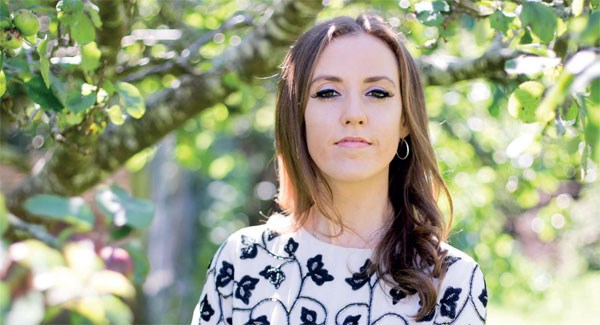Best known for her harrowing second novel, Asking for It, about a popular teenager who becomes a social pariah when graphic images of her gang rape are shared online, Cork native and Trinity alumnus Louise O’Neill is not a writer who flinches away from the ugly underbelly of contemporary Irish society.
Her most recent publication, After the Silence, is no different in this regard. Its plot could be that of a classic murder mystery: the morning after a hedonistic, drug-fuelled party on a remote island, a beautiful young woman is found dead with little evidence to connect crime and culprit. However, O’Neill avoids the linearity of a traditional who-done-it in favour of a temporally fluid narrative which is less interested in pinning the killing to a single individual, and more concerned with understanding the wider social forces that result in this extreme act of violence.
As we are in the 21st century, the detectives are not the cigar chomping Columbo or the pipe-puffing Sherlock Holmes, but rather two techy Australian filmmakers who arrive on Inisrún ten years after the murder of local woman Nessa Crawley to make an investigatory documentary about her killing. Prime suspects are the wealthy Kinsella couple who live in the island’s modern-day “Big House” and run Misty Hill – an artistic retreat dependent on the exploitation of the island’s supposed Celtic charm.
The novel is more concerned with understanding the wider social forces that result in this extreme act of violence.
While written largely from the perspective of Keelin Kinsella, After the Silence is interspersed with faux television interviews offering the viewpoints of other characters, Gardaí and expert witnesses. Even without these auxiliary features, Keelin’s own story is dramatic enough. She flees to Inisrún to escape a physically abusive marriage in Carlow, and within a year she is engaged to the brash and extravagant English blow-in Henry Kinsella. Her new husband soon proves just as toxic as her last, but uses subtler soft-power methods of control in his efforts to confine her to their isolated island mansion.
It’s obvious that O’Neill wants her writing to be more than entertaining and After the Silence makes a valiant effort to display the myriad forms domestic abuse can take. The novel hums effortlessly back and forth between past and present, helping us to understand how “intimate partner terrorism” – as one interviewed expert puts it – can exist under different guises. When the kicks and screams of Keelin’s first husband are placed side-by-side with the gaslighting and financial manipulation of Henry Kinsella, it is easier to see the connection between the two.
O’Neill makes a valiant effort to display the myriad forms that domestic abuse can take.
Parallels are also drawn between these acts of coercive control and the murder of Nessa Crowley. O’Neill strongly implies that both are rooted in the same underlying attitudes of misogyny and male entitlement. The veracity of the novel is greatly enhanced by her extensive research into domestic abuse, supplemented by visits to the West Cork Women Against Violence Project, whose work she praises in her acknowledgements.
Although well constructed and engaging, After the Silence does fall short of the gripping compulsivity of Asking for It. The novel can also seem somewhat unsure of its identity at times as O’Neill tries to fuse the tension of a murder mystery with a serious and sobering commentary on domestic abuse. Keelin’s personality is developed extensively, but perhaps at the expense of other characters in the novel. This is especially true of the filmmakers, who come across at times as barely more than shallow ciphers, present only to provide the novel with its framing premise. Henry Kinsella, however, is a well-rounded and disturbingly plausible villain, whose presence on the page is frequently squirm-inducing.
An enjoyable if often distressing read, After the Silence is an accessible text for opening conversations around violence and abuse in intimate relationships and families. It will no doubt please O’Neill’s primarily young adult audience and attract wider interest from those looking for a good crime thriller.







